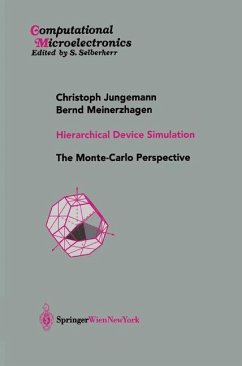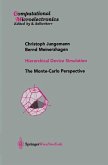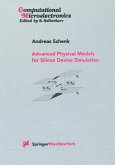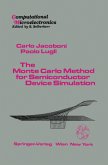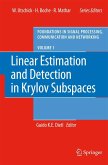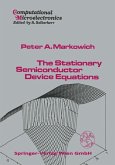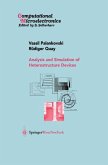This monograph is intended for scientists and TCAD engineers who are interested in physics-based simulation of Si and SiGe devices. The common theoretical background of the drift-diffusion, hydrodynamic, and Monte-Carlo models and their synergy are discussed and it is shown how these models form a consistent hierarchy of simulation tools. The basis of this hierarchy is the full-band Monte-Carlo device model which is discussed in detail, including its numerical and stochastic properties. The drift-diffusion and hydrodynamic models for large-signal, small-signal, and noise analysis are derived from the Boltzmann transport equation in such a way that all transport and noise parameters can be obtained by Monte-Carlo simulations. With this hierarchy of simulation tools the device characteristics of strained Si MOSFETs and SiGe HBTs are analysed and the accuracy of the momentum-based models is assessed by comparison with the Monte-Carlo device simulator.
This book summarizes the research of more than a decade. Its early motivation dates back to the eighties and to the memorable talks Dr. C. Moglestue (FHG Freiburg) gave on his Monte-Carlo solutions of the Boltzmann transport equation at the NASECODE conferences in Ireland. At that time numerical semiconductor device modeling basically implied the application of the drift-diffusion model. On the one hand, those talks clearly showed the potential of the Monte-Carlo model for an accurate description of many important transport issues that cannot adequately be addressed by the drift-diffusion approximation. On the other hand, they also clearly demonstrated that at that time only very few experts were able to extract useful results from a Monte-Carlo simulator. With this background, Monte-Carlo research activities were started in 1986 at the University of Aachen (RWTH Aachen), Germany. Different to many other Monte-Carlo research groups, the Monte-Carlo research in Aachen took place in an environment of active drift-diffusion and hydrodynamic model development.
This book summarizes the research of more than a decade. Its early motivation dates back to the eighties and to the memorable talks Dr. C. Moglestue (FHG Freiburg) gave on his Monte-Carlo solutions of the Boltzmann transport equation at the NASECODE conferences in Ireland. At that time numerical semiconductor device modeling basically implied the application of the drift-diffusion model. On the one hand, those talks clearly showed the potential of the Monte-Carlo model for an accurate description of many important transport issues that cannot adequately be addressed by the drift-diffusion approximation. On the other hand, they also clearly demonstrated that at that time only very few experts were able to extract useful results from a Monte-Carlo simulator. With this background, Monte-Carlo research activities were started in 1986 at the University of Aachen (RWTH Aachen), Germany. Different to many other Monte-Carlo research groups, the Monte-Carlo research in Aachen took place in an environment of active drift-diffusion and hydrodynamic model development.

